[Modern Art Series] Dadaism – Chapter 6
In 1916, at the time when modern artists seemed to be claiming autonomy from classical rules, the Dadaist reaction was to take their liberties further.
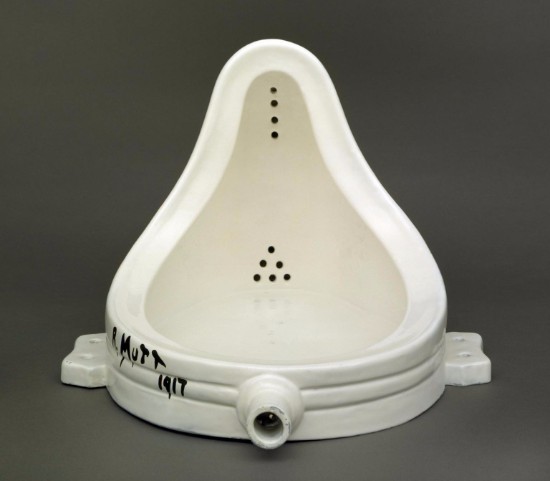
Marcel Duchamp, Fountain, 1917.
The Dadaist wanted to humiliate art, as their movement leader Tristan Tzara declared. They wanted to assign art to a subordinate place in the supreme movement of life.
The nonsense of the "Dada" term perfectly suggested their attitude. The Dadaists claimed that nineteenth-century bourgeois rationalism was corrupted and led to the First World War. To them, "logic thinking" was used to justify the killing and mutilation of millions.
Interestingly, plastic arts played only a secondary role in Dada; paintings and sculptures were used as means of communicating ideas, not to be appreciated on their own.
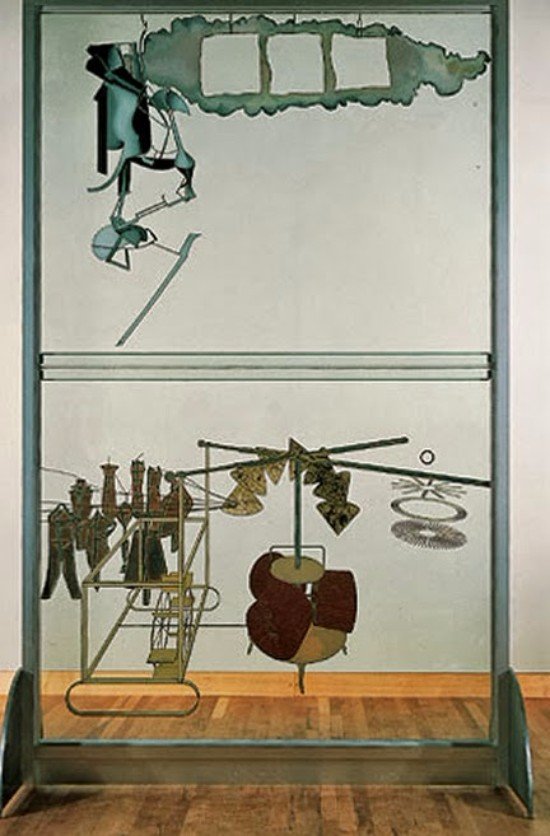
Marcel Duchamp, The Bride Stripped Bare by her Bachelors, 1923.
The beginnings of Dada, Tzara recalled, were not the beginnings of art, but the beginning of disgust. Bourgeois society was destroying itself in wars and similar confrontations. The Dadaists wanted that the bourgeoisie's self-destruction to be accelerated.
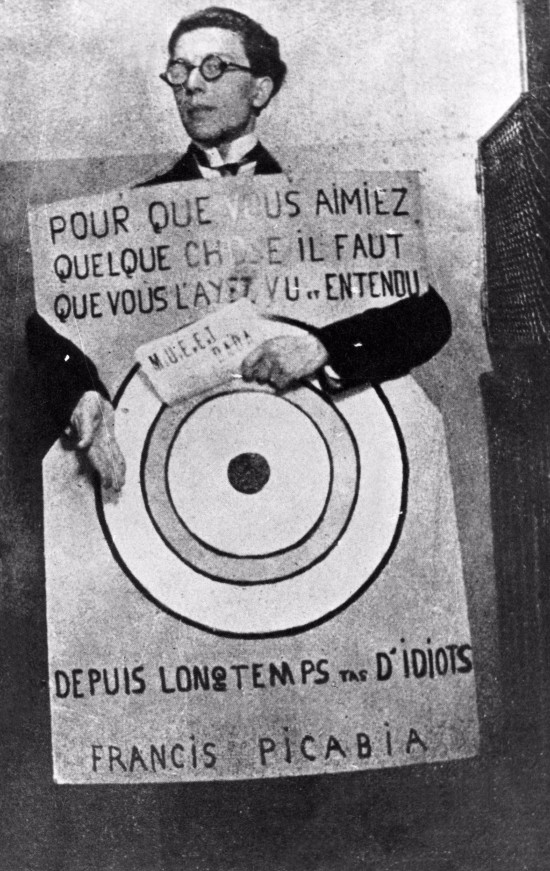
Andre Breton with a Dada poster saying: For you to like something, you must have been seen it,, heard it. Bunch of Idiots
Dada was provocation par excellence, as it criticized the central war adventure in which the world was then engaged in the early 20th century. Dada manifestations were made of absurd sketches, pranks, and performances. The value of art was found more in the act of making it than in the work produced.
Some of the great examples of that absurd work could be seen in the manifestations acted by Andre Breton and Francis Picabia where one was erasing drawings as the other made them.
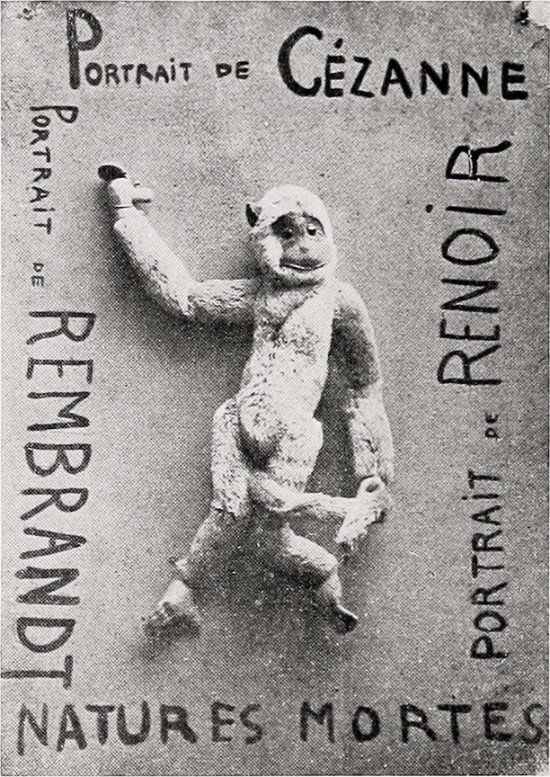
Francis Picabia, Still life, Portrait of Cézanne, Renoir, Rembrandt, 1920. Toy Monkey and Oil on cardboard.
Marcel Duchamp was the principal innovator of Dada. Emerging from the Cubist context of Parisian painting in 1912, he sacrificed paint, brushes, and canvas almost entirely to create "anti-art" of Readymade objects and images on glass.
Intended as epiphanies of irrational experience, the Readymades presuppose the existence of a meta-world, which Duchamp has described as fourth-dimensional.
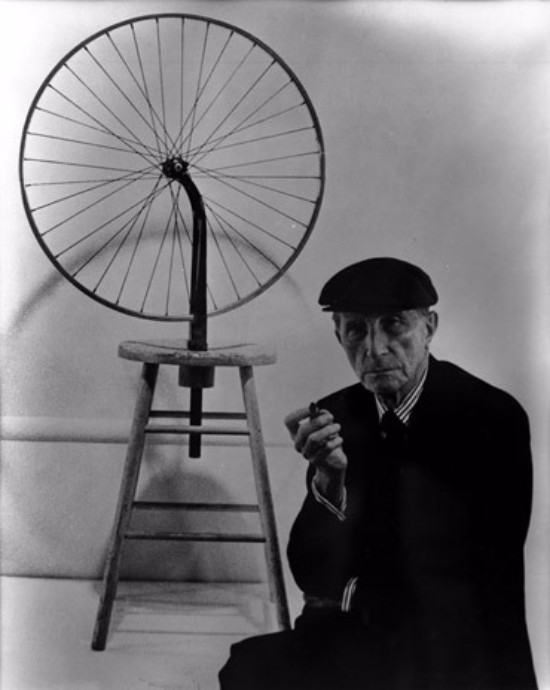
Marcel Duchamp, Bicycle Wheel, 1913.
He explained that if a shadow is a two-dimensional projection of a three-dimensional form, then a three-dimensional object must be the projection of a four-dimensional form. The simplest object held therefore the possibility of a revelation.
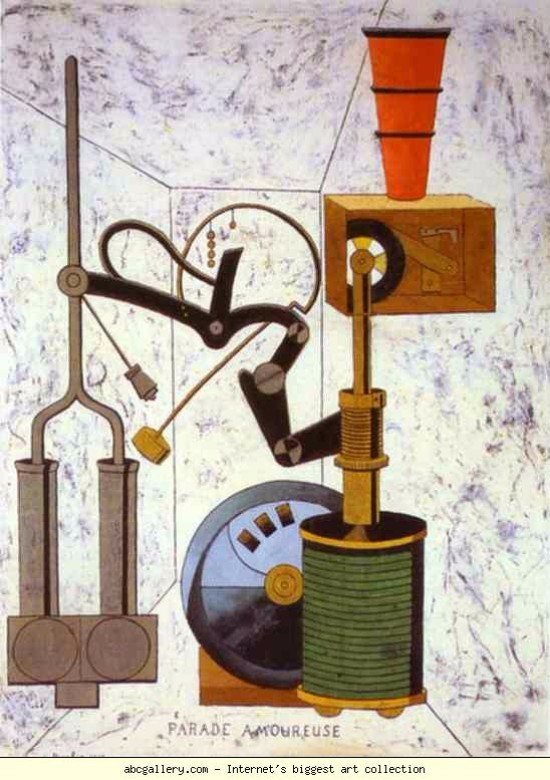
Francis Picabia, Love Parade, 1917.
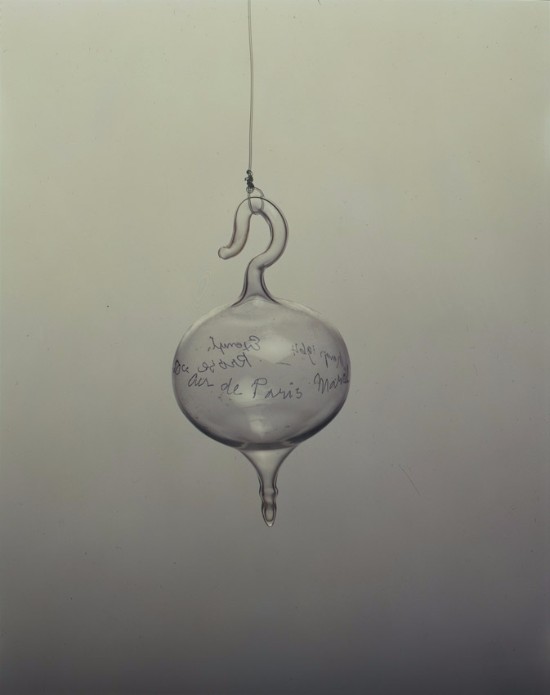
Marcel Duchamp, 50 cc of Paris Air, 1919.
The detente following the end of World War I created a less fertile environment for Dada and by the early twenties the movement had dissolved, leaving what remained of their provocations to the more contributing Surrealist movement.
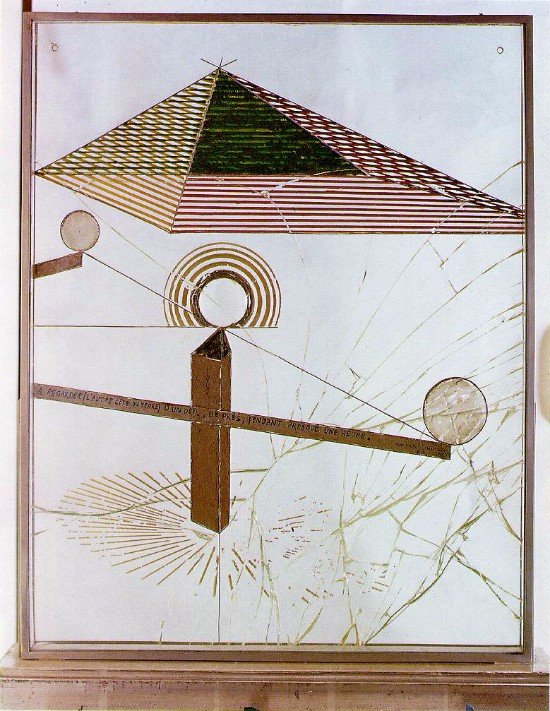
Marcel Duchamp, To Be Looked at (from the Other Side of the Glass) with One Eye, Close to, for Almost an Hour, 1918. Oil on glass, 51 x 41,2 cm.
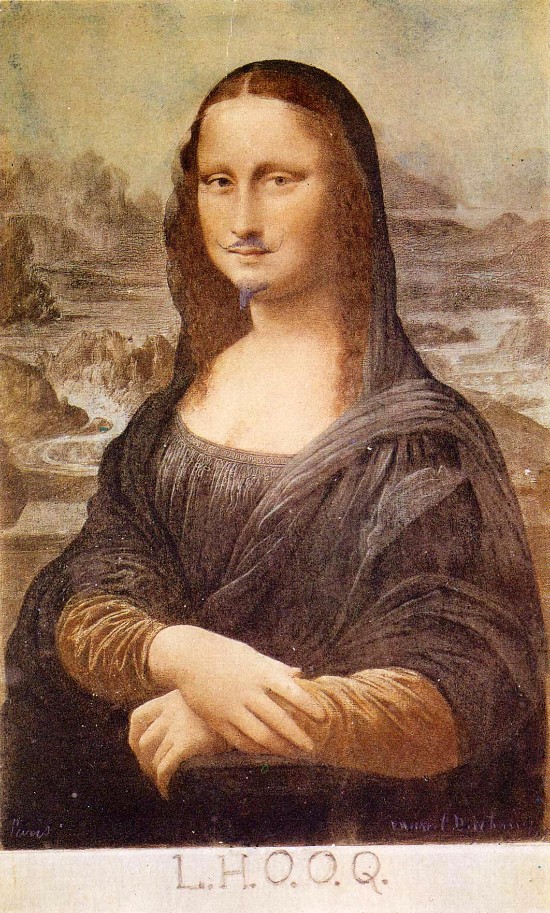
Marcel Duchamp, l.h.o.o.q. Mona Lisa with Moustache, 1919.
Follow me for more on this Modern Art series.
https://steemit.com/@achraf7b
References & Additional Resources:

I think Tzara was not a movement leader. He was a founder beside Hugo Ball and Hans Arp. And than later the movement began to develope different more or less solid groups. Like the german dadaism group with Raoul Hausmann and Richard Huelsenbeck. But i am looking forward to you next posts! Thank you for posting something related to real art! :D i would really enjoy to see more of this on steemit.
Yes Tristan Tzara wrote and co-authored early Dada manifestos. In this sense he's one of the founders, but I meant "leader" in the sense that he was promoting the Dada movement outside of neutral Switzerland, which actually inspired Andre Breton and Paul Eluard and others from other countries to join.
Thanks for the support and yes, there will be more like these. I just need to find an alternative to Steemit text editor.
Ah ok! I am looking forward to your posts. I hope perhaps we can get a small and nice art community here steemit.
I just set up a Discord server for art and history. If you think it's a good idea, we can use that to find each other at least. https://discord.gg/RReQXqD